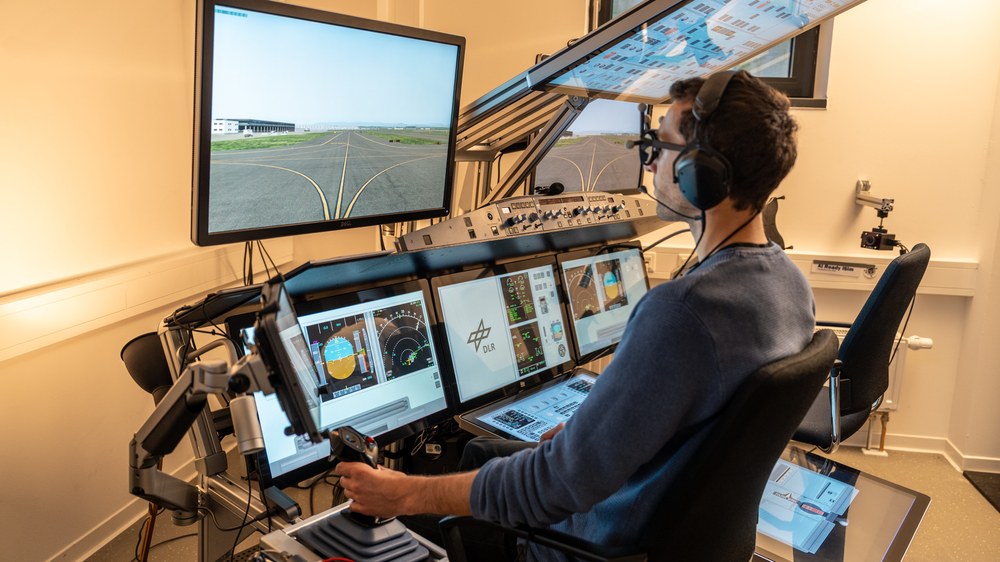DLR evaluates new digital assistant for the cockpit

- Study at DLR examined how AIR-DA in the cockpit affected workload, situation awareness and decision-making processes.
- The results are intended to show the extent to which a digital assistant can provide support in the cockpit
How much information about the artificial intelligence in new assistance systems is necessary for pilots to build sufficient trust? How does a digital assistant support pilots in different phases of flight? What impact does such an assistant have on situational awareness and workload? To answer these questions, the Institute of Flight Guidance at the German Aerospace Center (DLR) conducted a study with 21 commercial pilots in the iSIM cockpit simulator from 29 September to 30 October. The tests were carried out as part of the European research project JARVIS (Just a rather very intelligent system).
Cockpit assistant AIR-DA supports pilots in all phases of flight
Artificial intelligence and assistance systems are increasingly finding their way into the cockpit. Digital assistants could support pilots in many tasks in the future. At the same time, concepts are being designed and researched in which commercial aircraft will in future be flown by only one pilot, either temporarily (extended minimum crew operations) or permanently (single pilot operations).
The study focused on the new Airborne Digital Assistant, which was developed by Collins Aerospace and Boeing. The system uses various AI algorithms to support the different phases of a flight.
In the study conducted by DLR, the AIR-DA digital assistant supported pilots during the taxi and take-off phases with air traffic control instructions and clearances. To do this, the system tracks the pilot's communication with air traffic control on the ground. During the cruise phase, AIR-DA supported the test pilot's situational awareness and decision-making, and during the final flight phase, it assisted with preparations for arrival and landing.
Impact on the human pilot
During the study, pilots were confronted with three different flight situations, each once with and once without the support of the AIR-DA digital assistant. The aim was to find out how the system and its algorithms influence the way the cockpit works and how much trust is placed in the digital assistant. The focus was on the human operator and their needs.
During the flight situations, the distribution of attention was recorded using eye tracking, and the strategic decisions made by the pilots regarding the further course of the flight were also recorded. In addition, the researchers recorded the effects of working with the digital assistant on workload and situational awareness. After the situations, the pilots provided feedback on their use of the system and their trust in it. In this way, the researchers investigated how collaboration with the system works.

The results of the study will show how much such a digital assistant can support work in the cockpit in situations where a commercial aircraft is to be flown temporarily (extended minimum crew operations) or permanently (single pilot operations) by only one pilot. Over the coming weeks, the researchers will evaluate the data obtained on acceptance and human performance, as well as the pilots' impressions. The study also provides valuable insights into how good digital assistants can be developed to ensure greater safety and reduce workload in the cockpit.
About JARVIS
JARVIS is a SESAR EU-funded project developing three artificial intelligence based (AI-based) digital assistants to work support pilots, air traffic controllers and airport operators and ensure safer and more efficient operations. DLR is leading part of the research to validate an Airborne Digital Assistant (AIR-DA) that will work alongside pilots in the cockpit.
This project has received funding from the SESAR 3 Joint Undertaking under grant agreement No 101114692 under European Union’s Horizon Europe research and innovation programme.

SESAR 3 JU / EU
